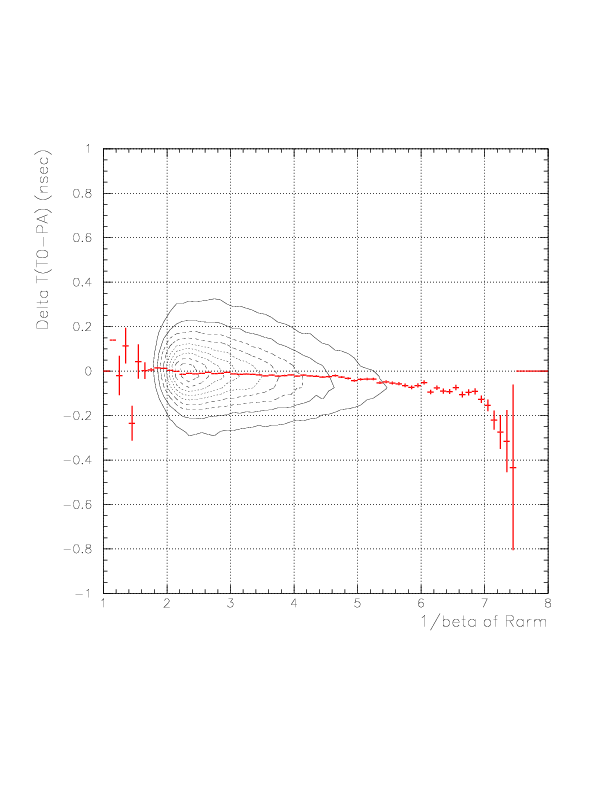1. Run-by-run tune of T0/PA/PB timing,
2. Systematic proton ID criteria on PB/NT system, and
3. vertex->PA TOF calculation code from PAPB TOF
are investigated and developed, and (pi^-, X) reaction is successfully studied. Then, now we examine the 4He(K^-, X) prompt timing analysis, which has been once examined (see, here), but remained as an advanced subject.DeltaT(T0->PA) = Tpa - Tt0 - TOFkstop - TOFsec,
for the 4He(K^-, pi^+/-) / 4He(K^-, p) reactions. Note that Tpa/Tt0/Tpb run-by-run time walk/relative offsets had been already eliminated here. For the former reaction, TOFsec is just simply calculated with the PAPB-detected velocity and flight distance without any correction, while energy loss correction is applied and TOFsec is re-calculated for the latter.

